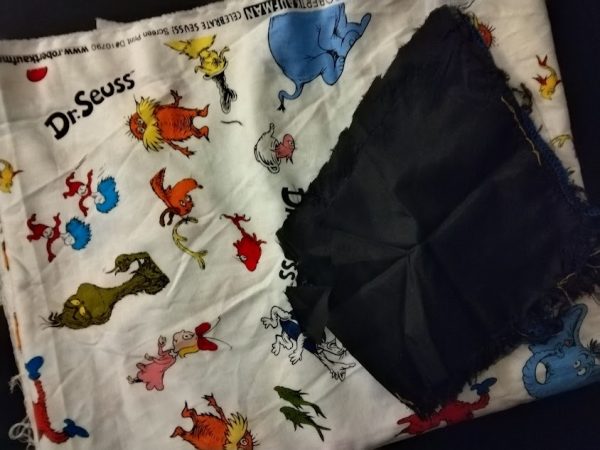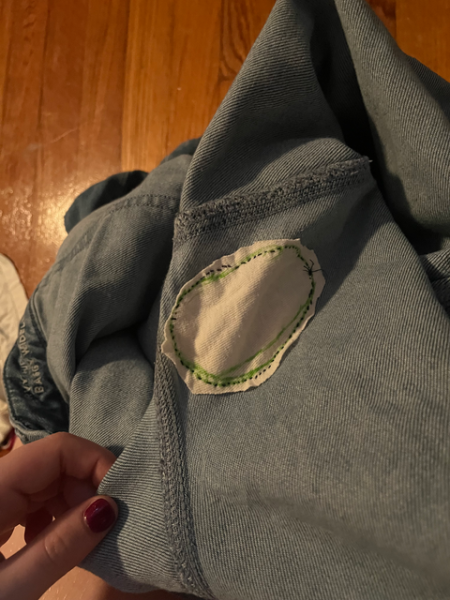A while ago, my girlfriend asked me to fix her jacket. The pockets were pretty worn out and the whole thing needed some TLC. I happened to have the day to myself (I was home sick), so I decided to sit down and take care of it. As I worked, I started thinking: a lot of people I know don’t bother mending their clothes. So I wanted to highlight some ways to repair your favorite pieces so they can stick around for years to come.
One of the jacket’s pockets had a hole big enough to make it completely useless. I had two options: sew a patch into the existing pocket or replace it entirely. Given the condition of the fabric, I chose to go with the second option. Luckily, she had some cute fabric on hand, so I used that.
I removed the old pocket and used it as a pattern. After tracing the shape onto the new fabric, I stitched the edges and carefully sewed it onto the jacket. It was a little tricky working around the original seam, but with plenty of pinning and patience, I got it done. It can be tempting to take the easy route and just slap on a patch, but with clothing repairs, extra effort really pays off. The more time and care you put into fixing a garment, the more wear and life you get out of it.

Most of the time, though, I rely on patches. They’re the simplest and quickest way to fix up clothes. Using scrap fabric, you can sew a patch on the front or back of a damaged area to cover it and stop further tearing.

A technique similar to patching is Sashiko, a Japanese method that adds extra reinforcement. It starts with a basting stitch to hold the fabric in place. The raw edges of the hole are then folded under and stitched down. After that, a series of horizontal and vertical stitches crisscross the entire patch, securing it tightly. Once everything is stitched in place, the basting thread is removed.

There’s also darning, which resembles weaving. It uses the fabric as a base to form a kind of loom, usually with embroidery thread. First, you create vertical stitches across the hole (called warp threads). Then, weaving the thread over and under them, you fill in the space horizontally—rebuilding the fabric structure. Darning is commonly used for socks but works for other knit garments, too.

No matter how you choose to repair your clothing, the important thing is that you do it. As individuals and as a society, practicing these skills supports sustainability. People often forget that fixing something is even an option—one more item ends up in the trash. But the truth is, to be repaired is to be loved. Sure, there’s always the fear of messing up or changing the look of a piece. But if mending means you get more time with your favorite sweater or go-to pair of jeans, then it’s worth it.





